Hulling Agreement & Instructions For Processing
Under the Hulling Agreement between Superior Almond Hulling and the grower, the instructions are outlined for receiving, processing and shipping the almonds.
It is critically important to be able to identify each load received by its owner, field and variety. This allows us to track each lot separately and eliminates the possibility of losing the load’s identity or mixing it with another field or variety. Refer to the Field Ticket section for detail on keeping your loads correctly identified.
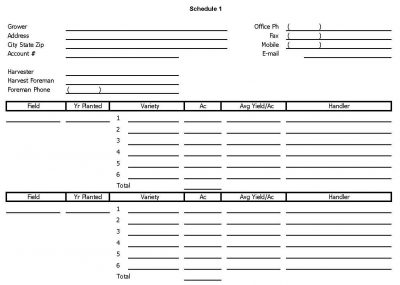
The Hulling Agreement includes Schedule 1 (as seen above), which defines the fields and varieties for each grower. Processing instructions can also be provided here by the grower according to his choice of almond buyer(s). This information can include inshell commitments to buyers, shelled meat contracts and quantities sold.
Processing Protocol
As the almonds are processed, bins or bulk shipments are filled and assigned to an almond handler according to the grower’s contract(s). Once processed by Superior, almonds are shipped to their pre-assigned destination immediately. No finished products are held on site.
The security of the processed almonds is insured by 24 hour onsite personnel and by the release of shipments to the proper handlers.
Fee schedules are determined annually for both processing and transportation on the Hulling Agreement, Schedule 2. The current year schedule will be published on the website when available.
Field Tickets – Identifying Your Deliveries
Complete and accurate information for each delivery is very important to us. Here is a copy of our field ticket:
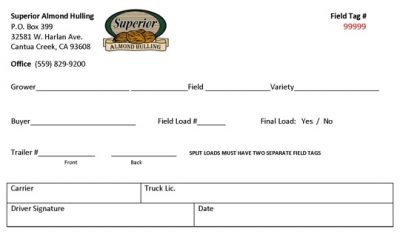
Grower/Field/Variety
Along with the tag number, this is the core identifying information required making this load exclusive from the many loads we receive each day. One of the frequent errors we see is that the field name may not match the records we have on file for you. Make sure that your harvester uses the same field name or numbering system that you do.
Buyer:If the field, variety or entire crop is assigned to a single buyer, enter the buyer’s name here. If unsold or not specifically assigned, indicate that the load is unassigned.
Field Load #
You can enter the number of loads harvested from each field sequentially. Superior Almond uses this numbering in the same way you do to track the total loads received from each field.
Final Load
Lets us know when you complete the harvest at one field before moving on to the next. Useful for scheduling trailers as well as stockpiling and processing.
Trailer #
Enter the number of each trailer, front and rear. Superior trailers are marked on the front, back, and sides with a trailer unit number (i.e. S-1204A, S-1204B).
Split Loads
If the set of trailers is split between two different fields or varieties, use a separate tag for each trailer (two tags). The combined load will be received as separate loads from each of the locations.
Carrier/Truck Lic./Driver Signature
This information is normally filled out by the driver when the trailers are picked up.
Trucks & Trailers For Harvest
When you are ready to harvest, we need to coordinate the trucking to have empty trailers on your ranch, and to be prepared to receive your harvested almonds at our plant.
Call In for Harvest Schedule
Growers should call the office for trailers a day or two ahead of harvesting to schedule trailers on the ranch. We will need to know the number of loads per day that are expected to be harvested so that we can provide sufficient trailers and drivers to avoid delays in harvest activity. We need your harvesters name and contact information. The grower/harvester can call the following numbers to obtain trucking services:
Barry Tayian | Trucking Coordinator | (559) 284-2990
Rene Ceja | Assistant Trucking Coordinator | (559) 356-5446
Superior Almond | Office Phone | (559) 829-9200
Kevin Long | General Manager | (559) 287-5145
Dominick Ramos | Operations Manager | (559) 779-8613
Trailers are unloaded promptly to allow the drivers to return to the field with empty trailers and keep the harvest moving. Most of the time, full trailers are just dropped off for Superior to unload, and the driver will pick up another empty set and return to the field immediately.
Receiving – Processing or Stockpiling
Based on the number of loads received per day and the varieties being delivered, some loads will be processed as soon as they arrive at the plant. It’s important to let us know your daily schedule so that we can plan for your deliveries. As soon as the almonds are hulled and shelled, they are assigned to the handler of your choice and are immediately available for shipping.
Stockpiles
Stockpiles are kept separate for every grower’s fields and varieties. We maintain enough separation between stockpiles to allow for loading equipment access and fire safety. Each load in a stockpile has its own tracking number, and the stockpiles are numbered by location to provide traceability at all times.
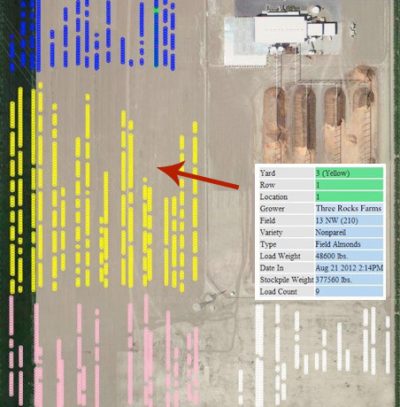
At Superior we are even tracking each stockpile by GPS coordinates to enhance the positive identification of loads and to ensure accuracy when we pick up the stockpiles. See on the above image, the red arrow points to a specific stockpile and shows its unique details.
Grooming Process
Every stockpile is groomed to smooth out the peaks and valleys, remove sticks, then covered with tarps to protect it from the weather. Moisture levels are monitored to determine the suitability for storage, and to help prevent moisture damage.
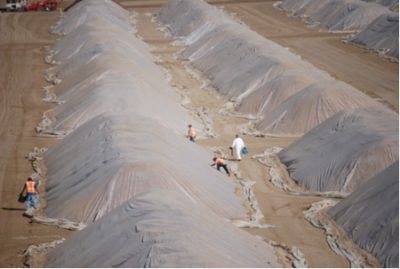
All stockpiles (except for organic almonds) are treated for insect control using fumigants immediately after the stockpile is completed.
No one takes better care of your nuts than Superior Almond Hulling!
Incoming Quality Requirements
It is very important for us to preserve the quality and quantity of the almonds that you deliver to us, and send them on to the buyer as a premium product. The grower’s help is essential in realizing this goal. Criteria for our quality assurance and protection program includes:
Moisture
Excessive moisture in loads delivered from the field can lead to spoilage, mold growth, microbial contamination, and concealed damage which may be classed as “inedible” by USDA graders. Controlling moisture after the nuts are harvested may require drying, either before or after the hulling and shelling process, which comes with drying charges. If drying services are not available, the load may have to be returned to the grower for ranch drying. Shelling wet nuts can also lead to excessive meat breakage or even embed shell particles in the kernels, also an “inedible” condition. Because of these risks, our agreement with the grower asks for deliveries to conform to the following MAXIMUM levels:
Hull Moisture 13%: CDFA feed regulations classify almond hulls with more than 13% moisture as “Damaged Hulls”.
Meat Moisture 6%: Handlers must dry any kernels exceeding 6% in order to prevent moisture related damage.
USDA subtracts any moisture over 5% from the lot weight when almonds are graded.
Foreign Material
Field deliveries of almonds typically include dirt and sticks from the shaking and sweeping operations. Minimizing the content of foreign material will reduce freight charges and increase turnouts, so it is in everyone’s best interest to keep orchards and orchard floors as clean as is practical. Dirt and sticks can cause bridging in trailers, leading to equipment damage during unloading.
Extra labor and equipment is always necessary when this occurs, adding to the product handling expense. Small twigs and orchard shreddings can contaminate the almond hull piles, resulting in significantly reduced feed commodity value.
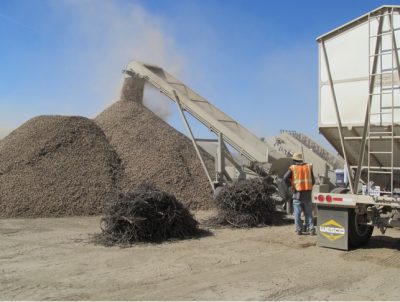
Other debris that is left on the orchard floors will also be swept up and delivered, and may lead to product contamination. Other debris may include: trash blowing in from roadways, food items discarded by workers, and miscellaneous organic materials subject to decomposition.
Superior Almond’s hulling agreement requires the grower to develop and maintain orchard sanitation policies as a part of their Good Agricultural Practices (GAP’s). This program will hand off food safety responsibility to the Good Manufacturing Practices (GMP’s) employed by the huller, and also by the handler. These programs combined can help to avoid any initial contamination and prevent cross contamination between processing lots.
Insect Damage
Once harvested, field almonds are delivered to the huller and are immediately stockpiled and fumigated (except for organic almonds) to prevent insect damage, or they may be processed first and sent on to the handler, where they are fumigated during storage. Superior Almond Hulling manages the stockpiles and retreats as necessary.
If insect damage has already occurred prior to delivery, the damaged almonds may be subtracted from the grower’s paid weight after USDA grading, so it is important to deliver clean and undamaged almonds at harvest.
Reporting On Your Progress
Updated reporting is available as soon as loads arrive or are processed. Growers can access their reports through our website, or request any report from our office staff. Our office will assist you with setting up your account and obtaining your individual username and password. Reporting available through our website includes:
Load Reports
Field Ticket Deliveries: lists the individual field loads received at the huller. Loads are sorted by field and variety, with net weight and status (either stockpiled, staged, or run).
Delivery Commitments: shows all delivered field loads either committed to a buyer or unassigned.
Stockpile Reports
Stockpile Inventory: is a listing of each load currently in the stockpile awaiting processing, with its field and variety identification and its weight and location.
Stockpile History: includes all the same information but also includes those loads already picked up and processed.
Processing
Run Summary: gives field load information and meat yields for each processing lot.
Turnout by Run: groups fields and varieties and reports the total field weight, meat weight and turnout percentage.
Run Details: are also available for each lot that also include meat bin ID’s, bin weights, and handler assignment.
Turnout
Turnout by Grower, Field & Variety: summarizes each field and its varieties, showing field weight, meat weight and turnout.
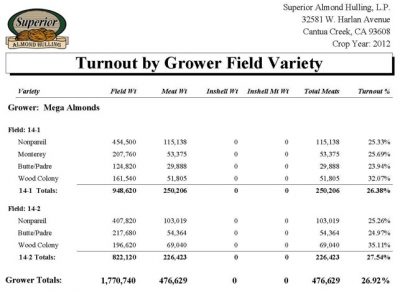
Food Safety – GAP’s & GMP’s
The California almond industry has a robust program for preventing microbial food contamination, thanks in great measure to the Almond Board of California (ABC). While the grower and processor protocols developed by the ABC have been enormously successful, it will require a coordination of efforts between growers and processors to continue to protect our product’s integrity and its healthful reputation.
“Food safety must be maintained throughout each stage of handling almonds, from the orchard through shelling and grading, and ultimately from the manufacturer to the consumer. All segments of the almond supply chain must consider themselves to be food processors if they are to reach the ultimate objective – providing consumers around the world with the highest level of confidence in California almonds.”
– Almond Board of California
Food Safety for Growers – Good Agricultural Practices (GAP’s)
Good Agricultural Practices for almond growers have been developed by the ABC, who has published a quick start guide on their website for growers to access. While we won’t try to reinvent the entire program here, we would like to point out some of the key elements of the program. There are eight elements to the suggested program:
-
Documentation
Identifying your farm with field names and locations, outlining your operations from pre-bloom to post harvest, documenting supervisor and employee training, analyzing on-farm hazards that may impact food safety, and thorough record keeping for all GAP activities are all vital to the program. In the event of a product recall, nothing is more important than complete documentation of product handling all the way from the farm to the table.
-
Employee Training
It’s not enough for the grower to understand his food safety program, the employees of the operation must understand the ranch’s commitment to food safety and receive proper training on food safety hazards, from personal hygiene and handwashing to orchard sanitation, operational safety and equipment maintenance.
-
Fertilizer and Soil Amendments
Residues from any materials applied to the orchard should be a concern for food safety, but manure and compost in particular can also transfer pathogens to the almonds if they are not handled correctly. Bio solids or sewage sludge should never be applied. If manure is used, only completely composted products that have undergone pathogen reduction should be considered.
You should ask the compost producer for documentation that the composting temperatures were maintained at 131°F for15 days or longer, and that windrows were turned at least five times during the composting process. Microbial tests should show E. coli < 1,000 MPN/gram and Salmonella < 3MPN/4 grams (MPN stands for Most Probable Number). -
Water Quality and Source
This is a hazard assessment for another potential source of contamination. Microbiological water testing from each source of water availability is a core component of any food safety program.
-
Orchard Floor Management
Our favorite. Growers should consider a written program for orchard sanitation that considers resident and seasonal wildlife in the area, and keeps the orchard floor as clean, level, smooth and dry as possible. Training employees on proper orchard floor preparation and harvesting and windrowing would be one of the most effective farm practices influencing food safety.
-
Field Sanitation and Employee Hygiene
Training for year round and seasonal employees on their role in field sanitation is critical to your food safety program. Portable toilets are required for all production blocks. Field harvesting equipment and the vehicles used to transport the almonds after harvest must be clean and free of soil, debris, moisture, odors and other nuts.
-
Pest Control
Document all corrective actions taken in regard to pest control. Insects can vector plant diseases and pathogens, and can also attract birds, reptiles and amphibians. Preventing rodent and small mammal population increases can reduce the presence of predators.
-
Harvest and Delivery Sanitation
Harvest is a critical time and specific attention should be made to eliminate potential sources of contamination or conditions which could result in the proliferation of microorganisms such as molds that produce aflatoxin or bacteria such as Salmonella which can cause illness. In addition, steps should be taken to prevent the introduction of foreign objects or materials into the crop during the harvest process and delivery to the processing facility.
Cross contamination of harvested almonds with bacteria can occur if the equipment or transportation vehicles used have not been cleaned and inspected prior to use. In order to minimize the potential for cross contamination, it is sometimes necessary to sanitize the harvesting equipment and the transport vehicles/containers prior to use during harvest operations.
Your almonds should be properly dried before being picked up. Excessive moisture on the orchard floor at the time of harvest can lead to the proliferation of bacteria and mold if not dried before harvesting. If stockpiled, proper storage guidelines must be followed to prevent microbial contamination and mold growth. This is the reason for our quality requirements of 6% maximum moisture for almond meats, and13% for almond hulls. Superior will ensure that transportation equipment and stockpiling requirements for sanitation are met.
Finally, a successful program must be a continuing effort. A self-auditing checklist should be developed to ensure the effectiveness of your program.
To read this feature in its complete version, please visit Almond Board’s original article: Good Agricultural Practices
Food Safety for Processors – Good Manufacturing Practices (GMP)
Almond huller/shellers and almond handlers are required by the Code of Federal Regulations (21CFR110 – Good Manufacturing Practices) and by the California Health and Safety Code (The California Food Sanitation Act) to develop and maintain Good Manufacturing Practices (GMP).
Superior Almond Hulling has developed its food safety and sanitation program in conjunction with the Almond Hullers and Processors Association. This program relies heavily on the almond growers GAP program for the integrity and quality of the incoming almonds.
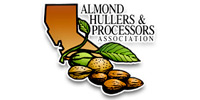
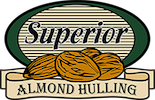
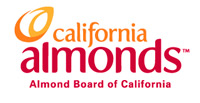
“Minimizing the incidence of foodborne illnesses resulting from crop contamination is a concern for all almond growers. Bacteria that cause foodborne illnesses, such as salmonella and E. coli, can be found in animal and human feces. The potential for contamination of almonds with these organisms increases during harvest, when the nuts are dropped to the ground.”
– ANR Publication 8126, University of California
Prevention of Contamination
We take great care to prevent the introduction of any contaminants to the product we receive, and to prevent potential cross contamination of processing lots from product co-mingling. Much like GAP’s for the grower, our GMP’s address documentation, employee training, water quality, plant sanitation, pest control and employee hygiene. Additional considerations for processors include HACCP (Hazard Analysis and Critical Control Points) and Product Recall Programs.
Product Recall Programs
As a first processor, the huller/sheller is very closely identified with the harvest operations, and the key driver for us in Product Recall is our Traceability Program. This gives us not only the ability to track food items through the chain of custody to its field of origin at the farm, but we also track every step of processing once it arrives at our facility. This includes dates and locations of stockpiles, fumigation treatments, weather, storage periods, lot processing information, moisture conditions, and finally, delivery to the handler.
Superior’s GMP program is crucial to protecting the quality of the crop produced under the grower’s GAP procedures. Superior Almond Hulling participates in an annual unannounced third party audit of food safety practices, receiving “Superior” ratings each year.